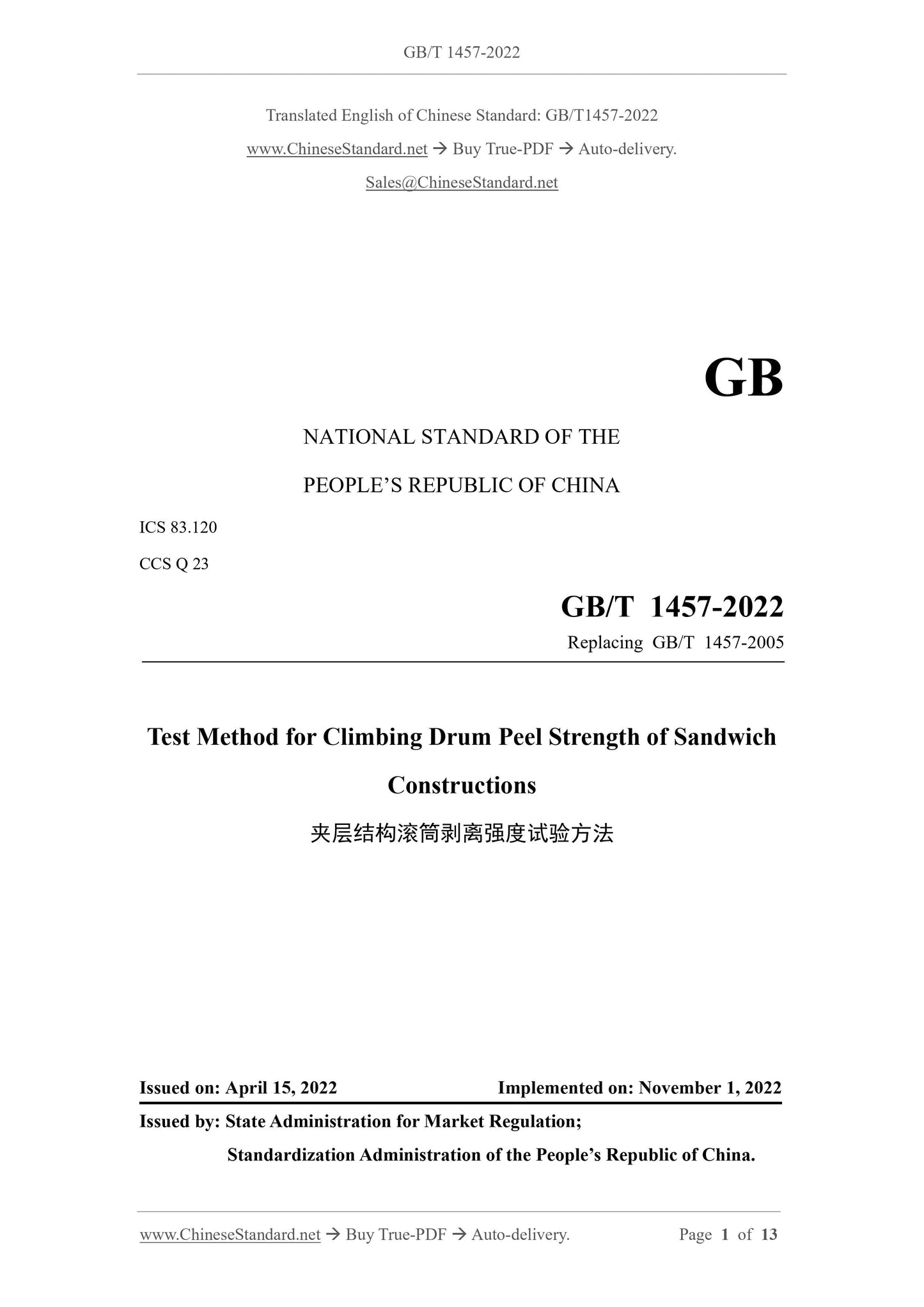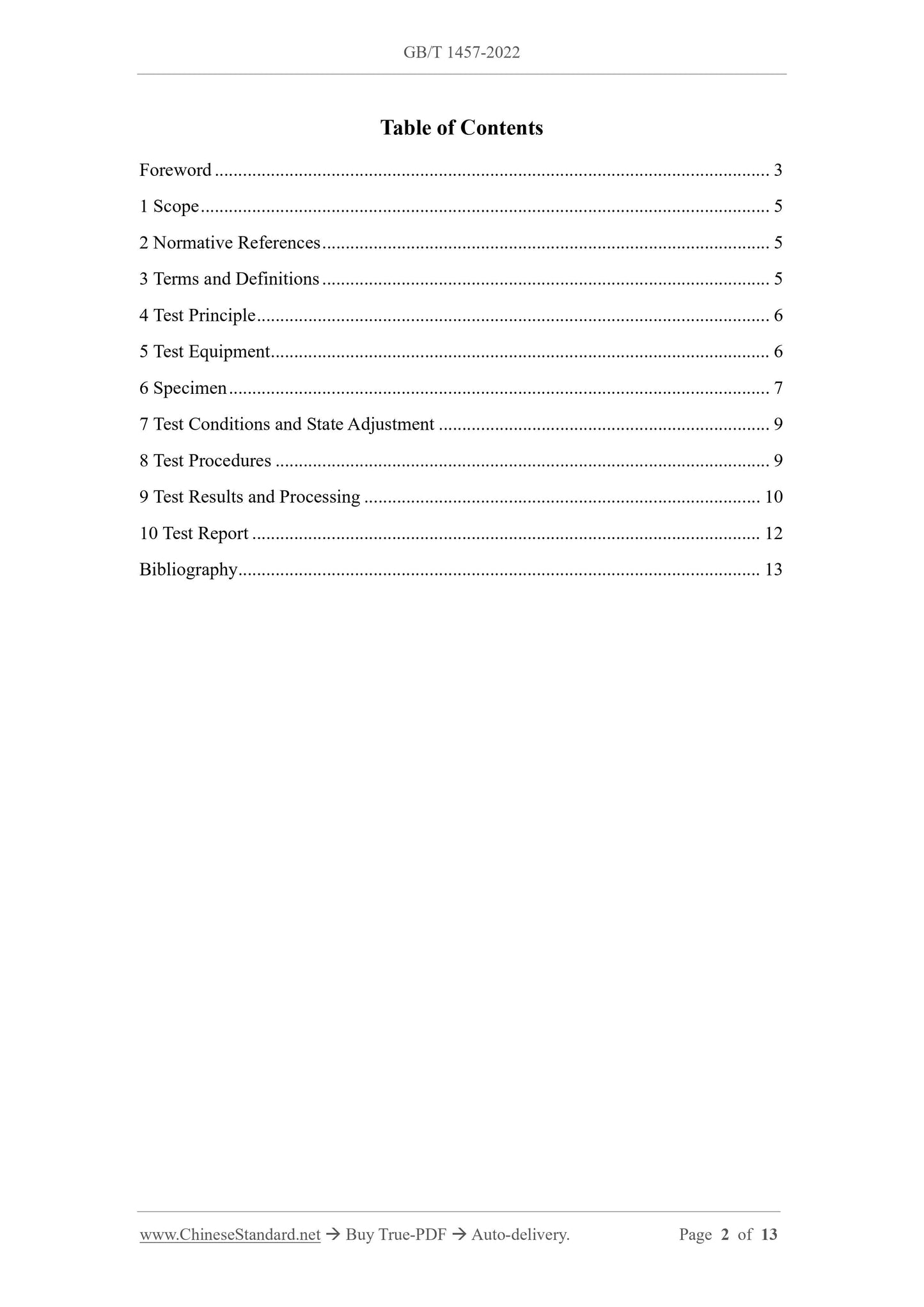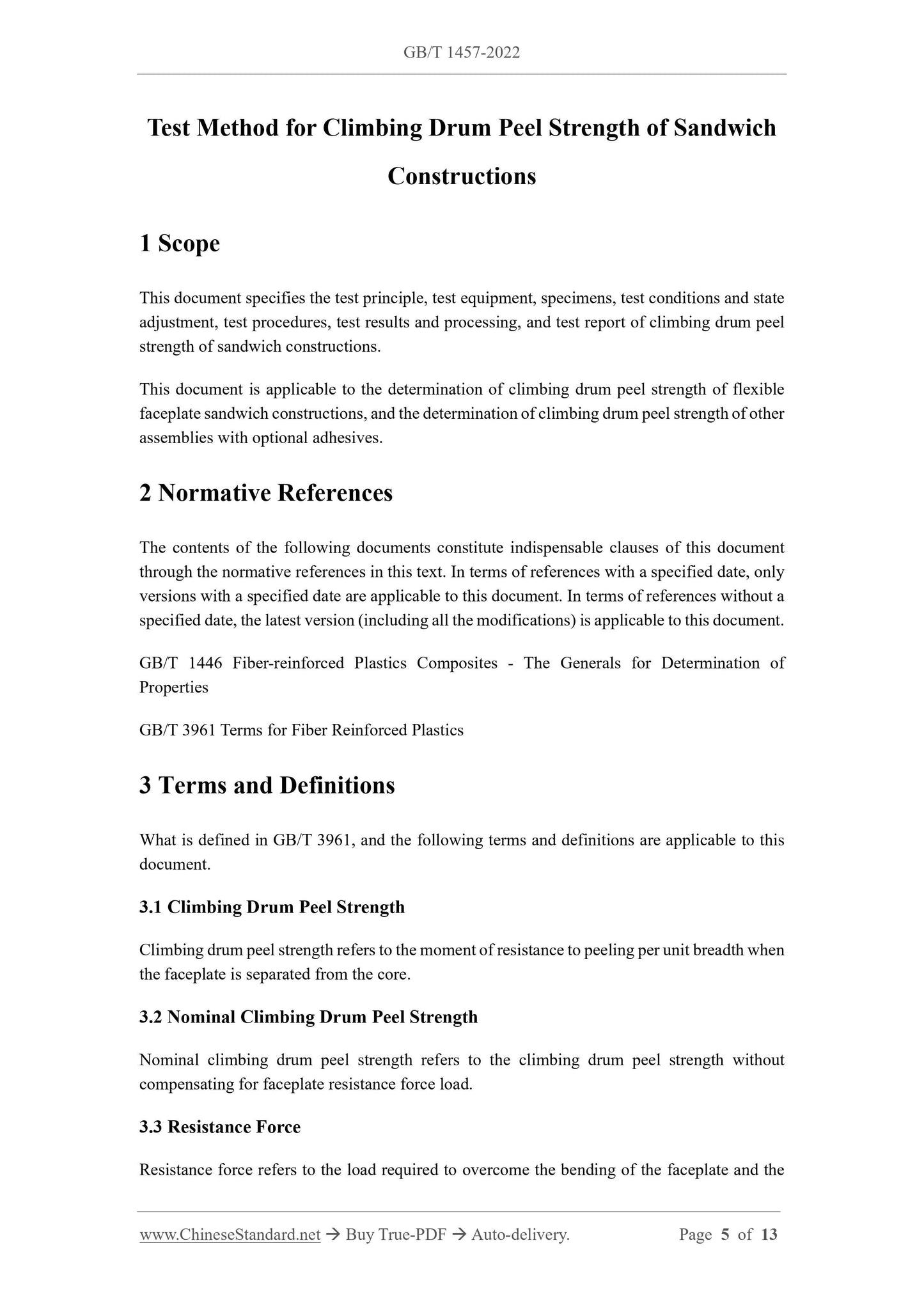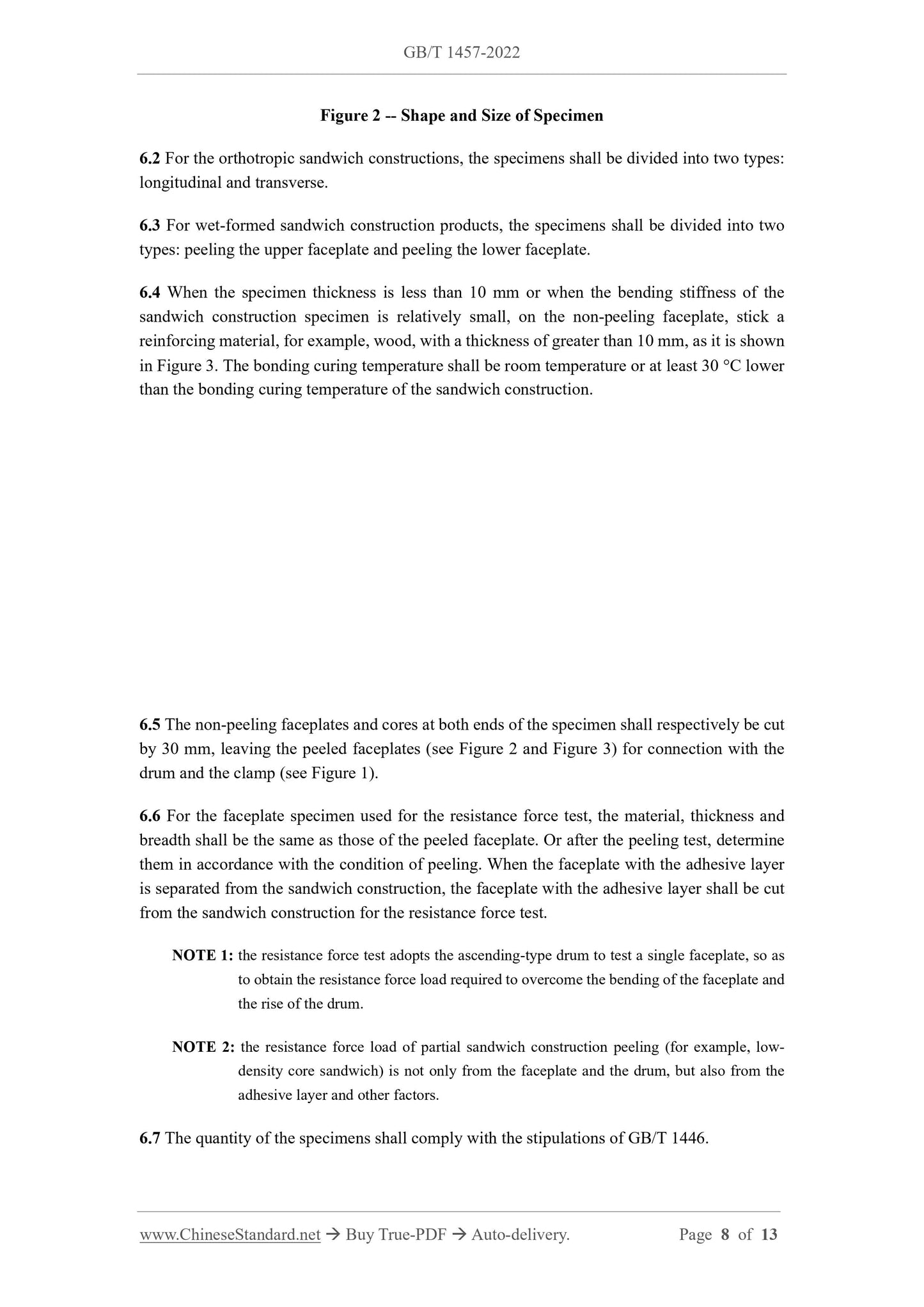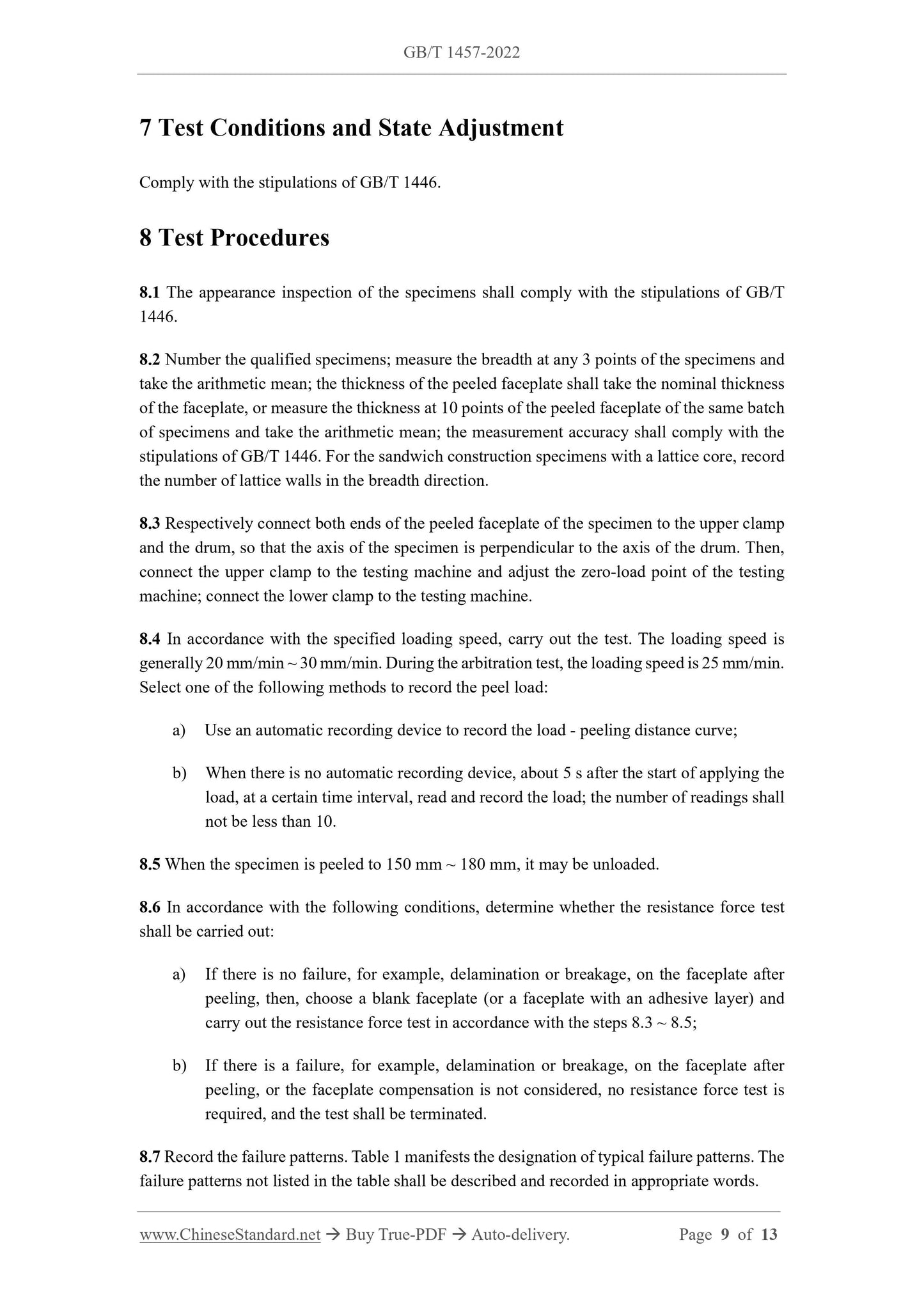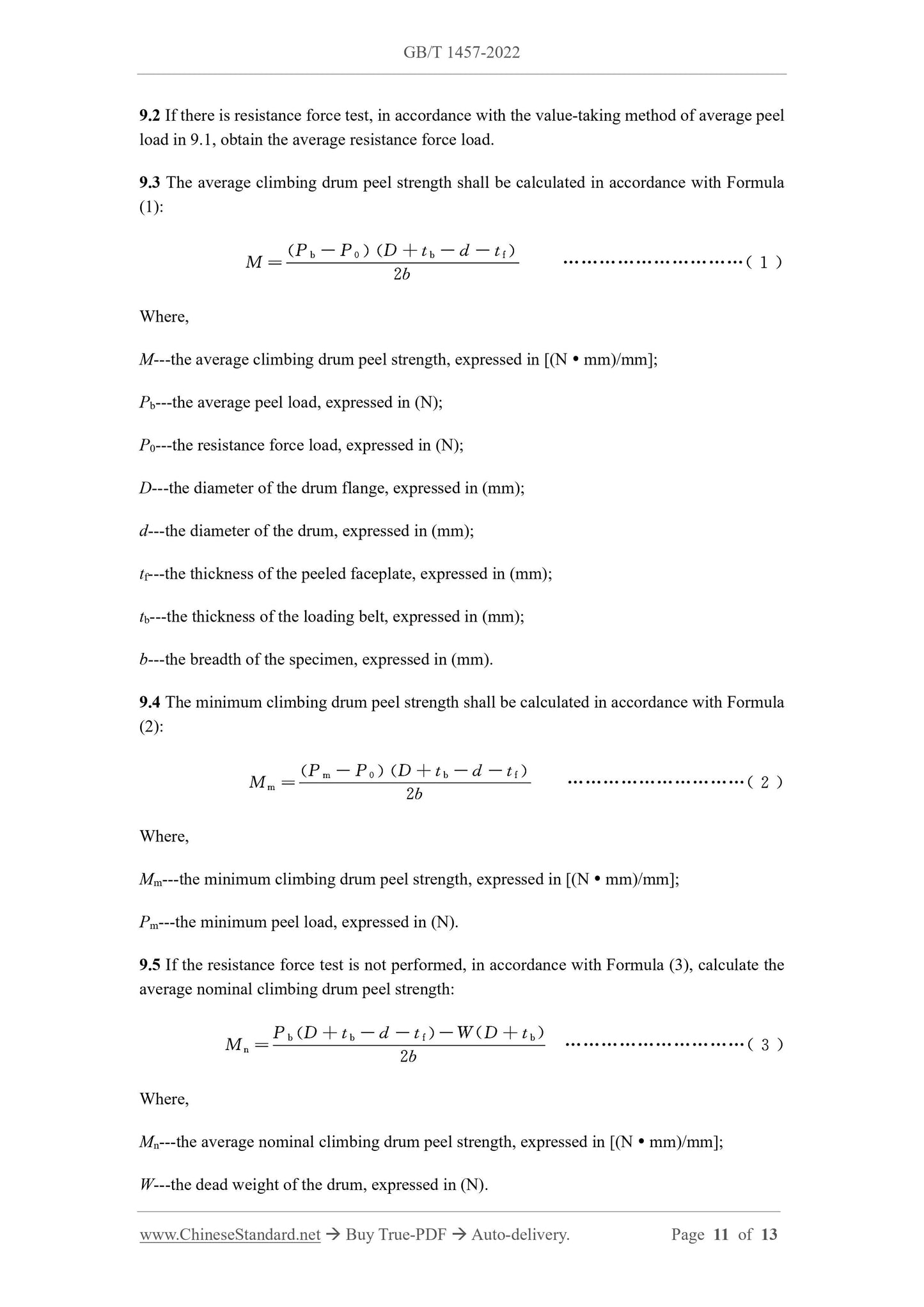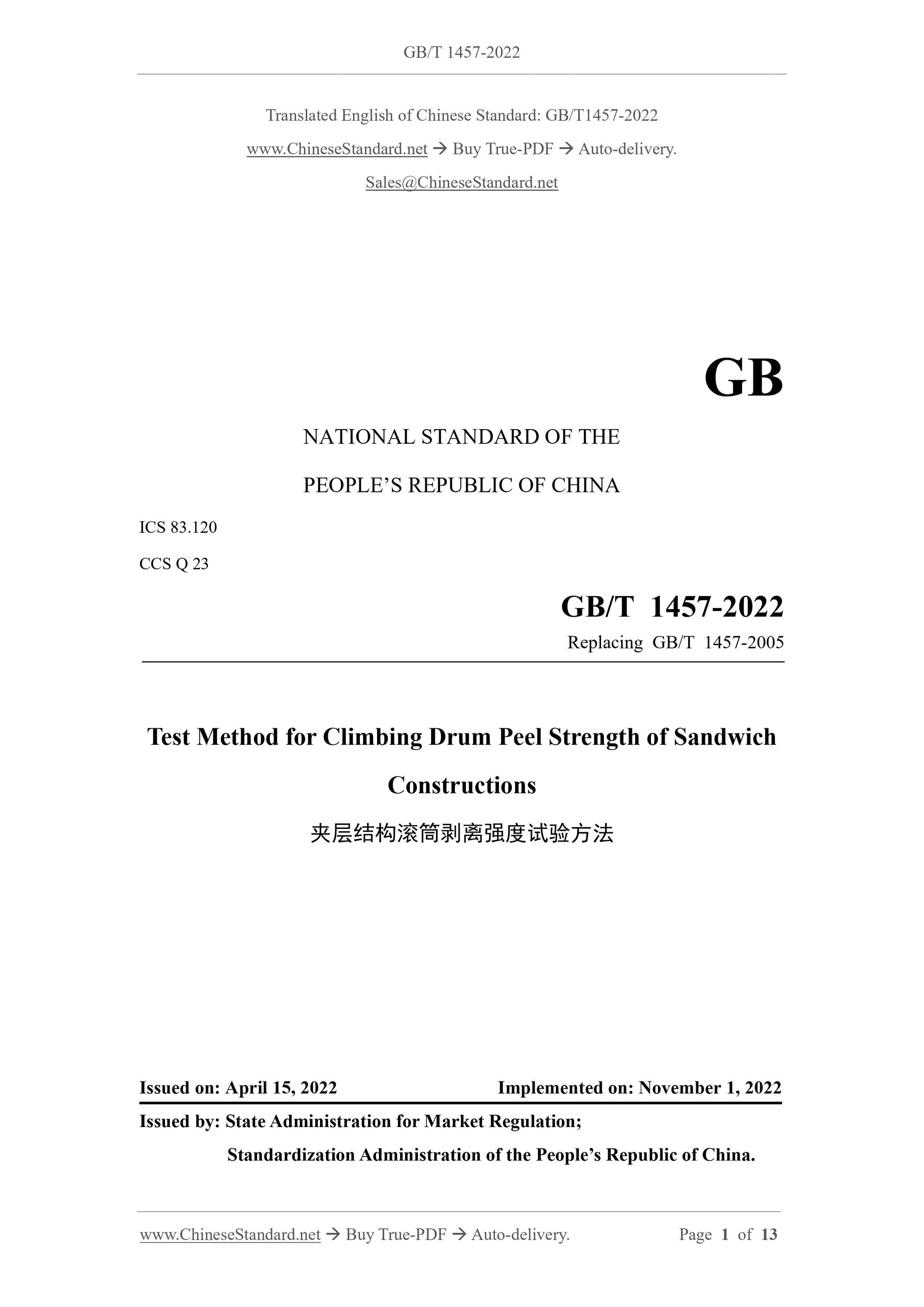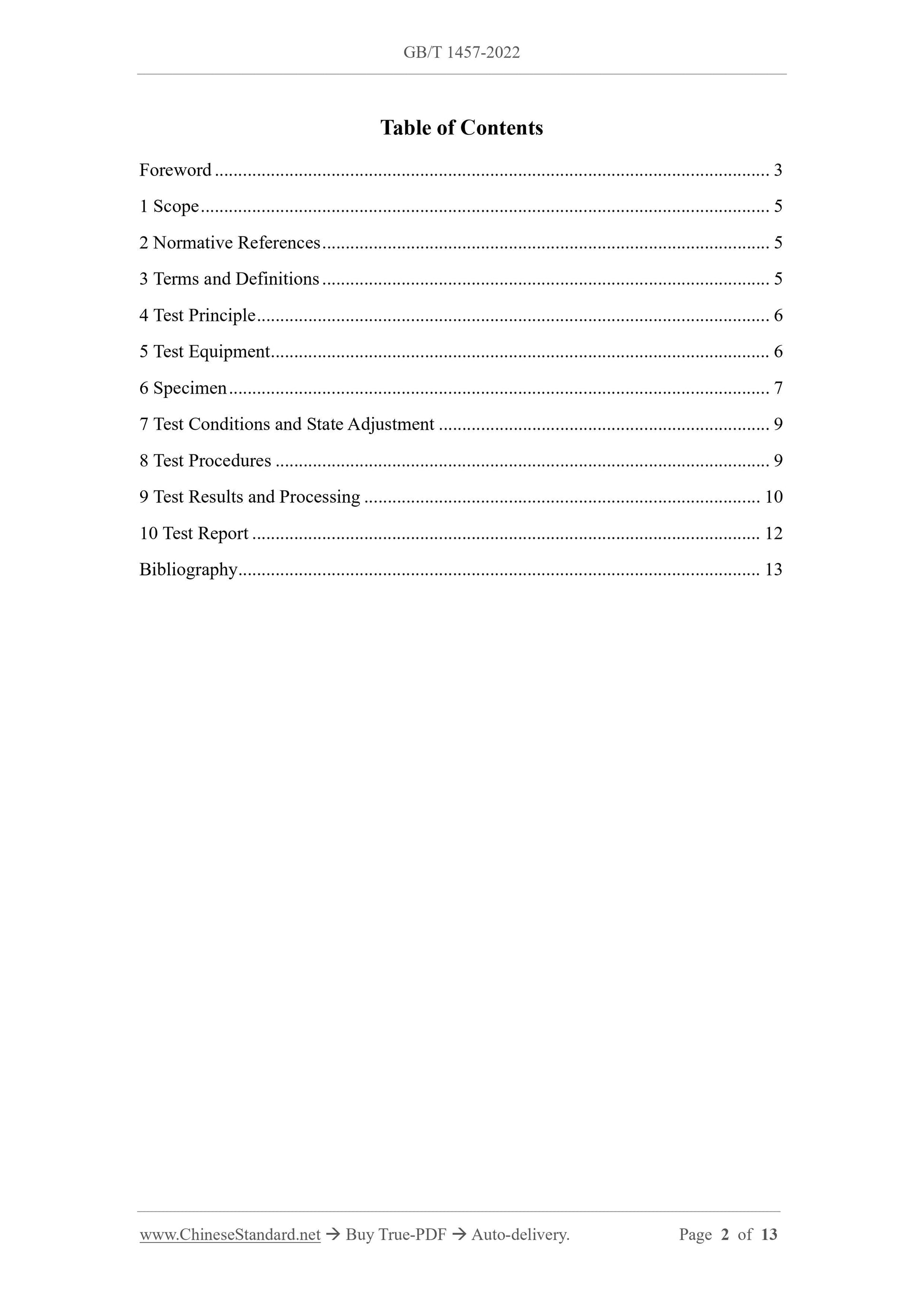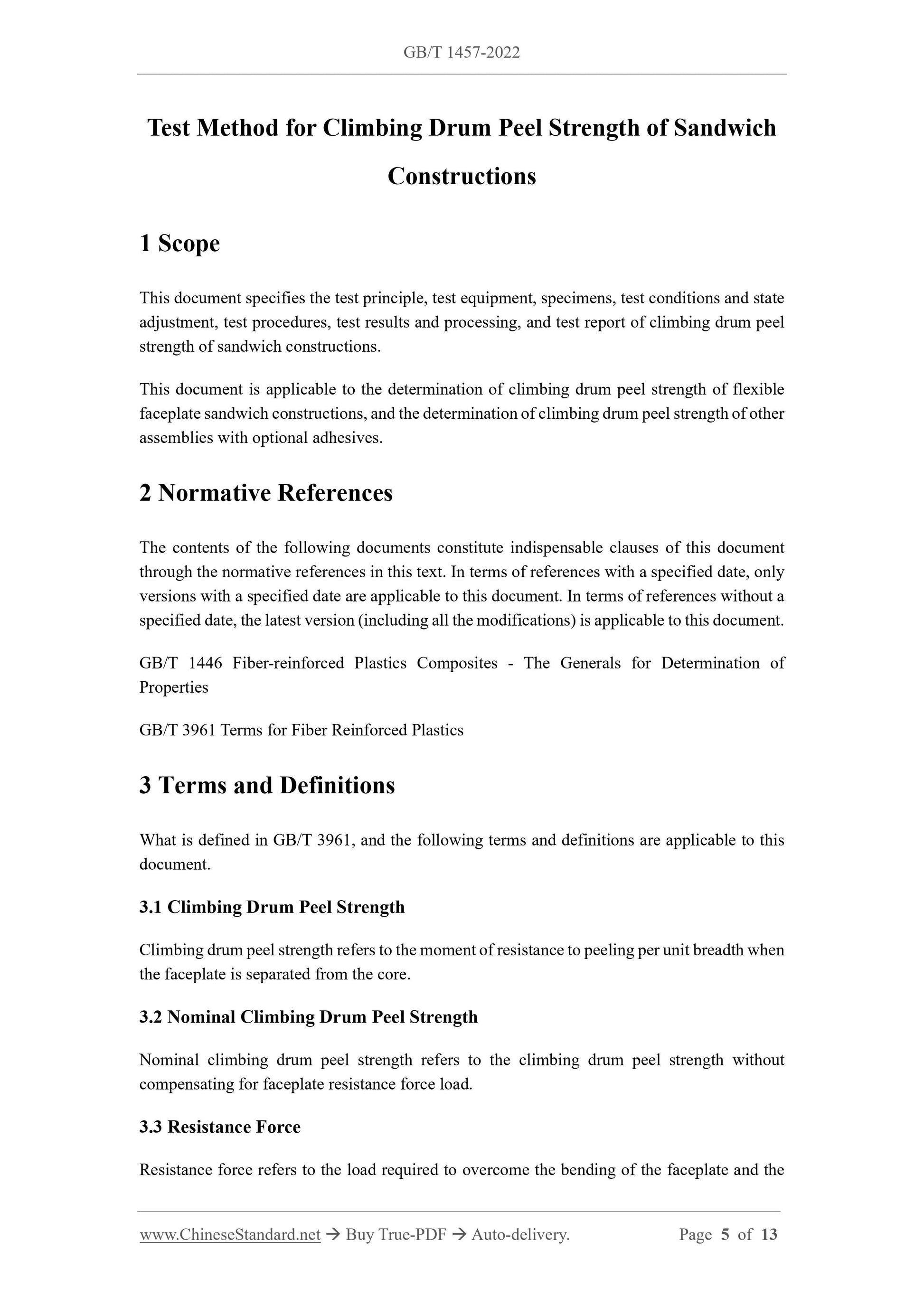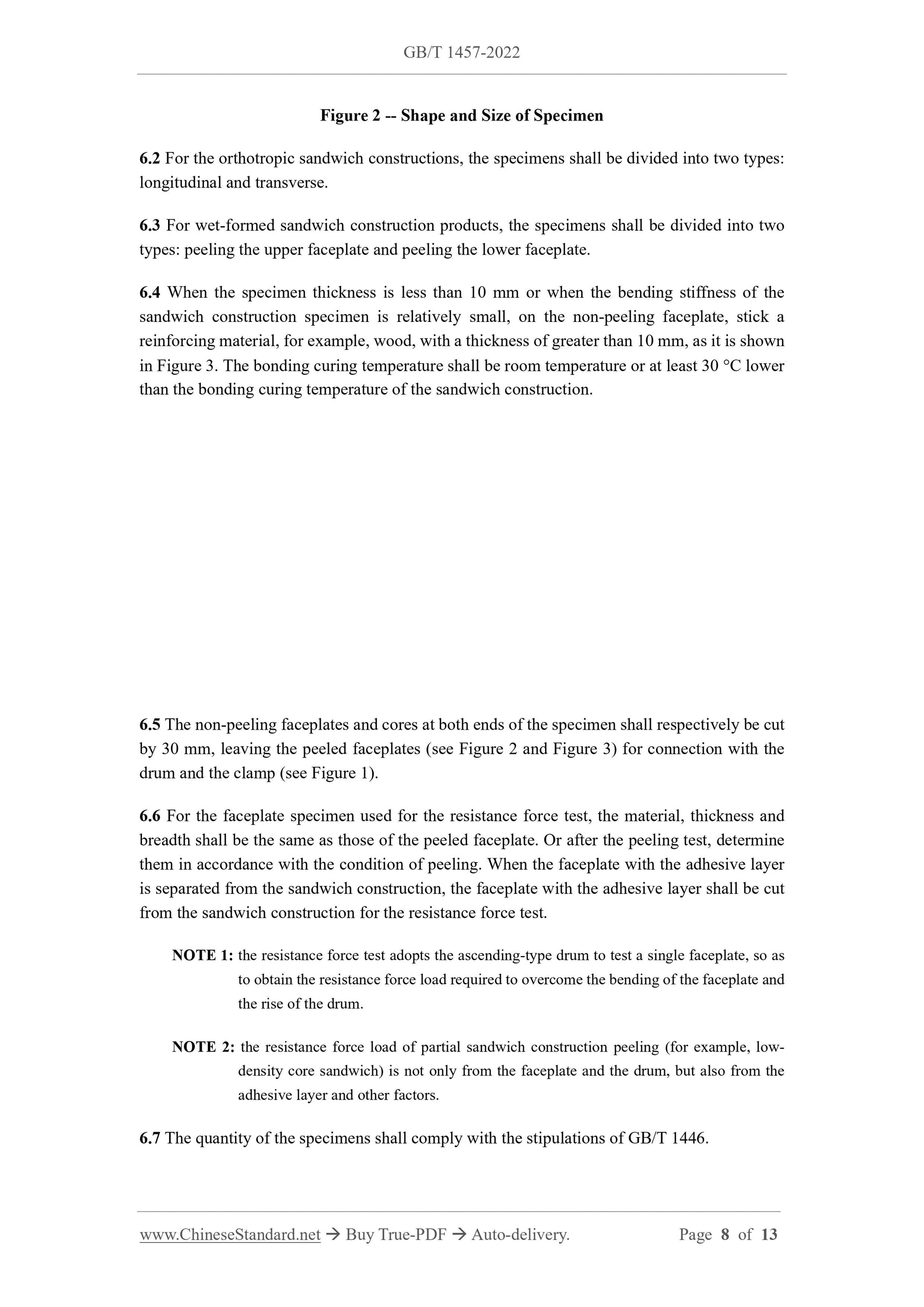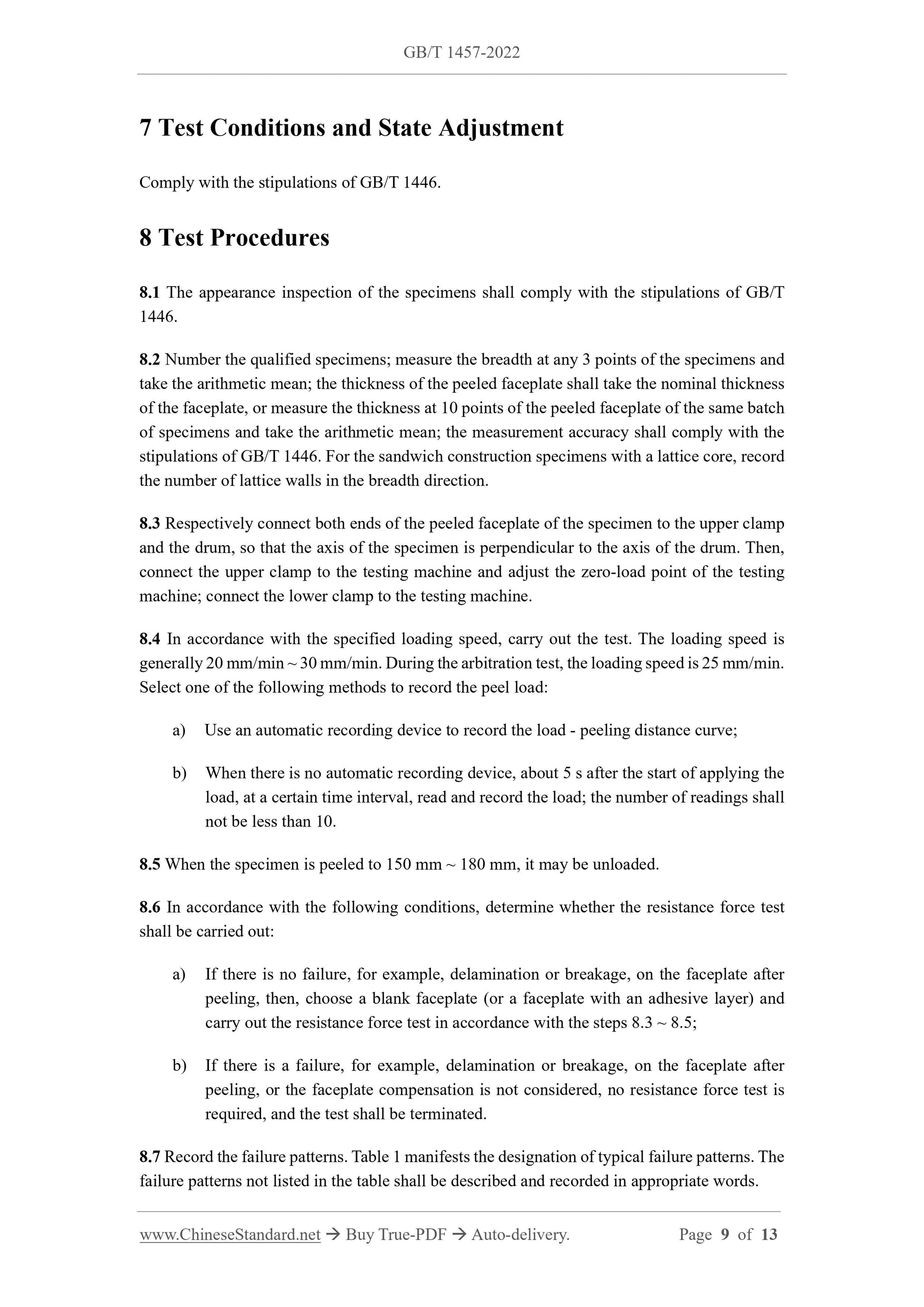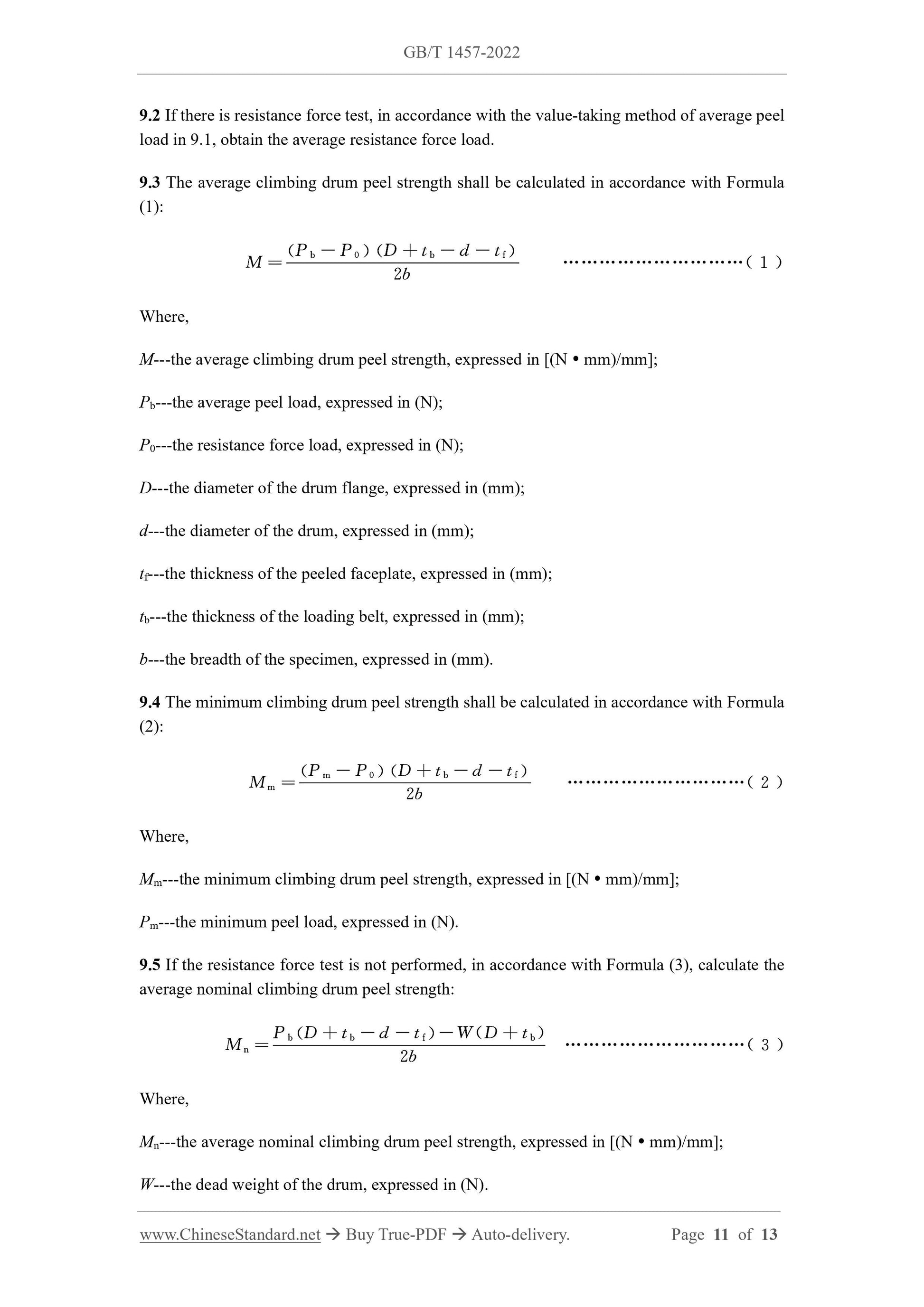1
/
of
6
www.ChineseStandard.us -- Field Test Asia Pte. Ltd.
GB/T 1457-2022 English PDF (GB/T1457-2022)
GB/T 1457-2022 English PDF (GB/T1457-2022)
Regular price
$200.00
Regular price
Sale price
$200.00
Unit price
/
per
Shipping calculated at checkout.
Couldn't load pickup availability
GB/T 1457-2022: Test method for climbing drum peel strength of sandwich constructions
Delivery: 9 seconds. Download (and Email) true-PDF + Invoice.Get Quotation: Click GB/T 1457-2022 (Self-service in 1-minute)
Newer / historical versions: GB/T 1457-2022
Preview True-PDF
Scope
This document specifies the test principle, test equipment, specimens, test conditions and stateadjustment, test procedures, test results and processing, and test report of climbing drum peel
strength of sandwich constructions.
This document is applicable to the determination of climbing drum peel strength of flexible
faceplate sandwich constructions, and the determination of climbing drum peel strength of other
assemblies with optional adhesives.
Basic Data
| Standard ID | GB/T 1457-2022 (GB/T1457-2022) |
| Description (Translated English) | Test method for climbing drum peel strength of sandwich constructions |
| Sector / Industry | National Standard (Recommended) |
| Classification of Chinese Standard | Q23 |
| Word Count Estimation | 10,12 |
| Issuing agency(ies) | State Administration for Market Regulation, China National Standardization Administration |
Share
